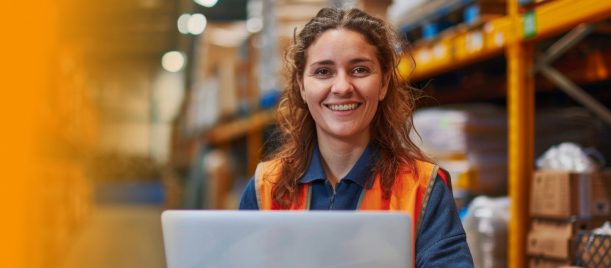Even as the pandemic-induced disruptions abated after 2021, global supply chains continue to reel under ongoing military conflicts and geopolitical factors. These include the Red Sea crisis as well as trends such as nearshoring and friendshoring, which have caused elongated supply chains and affected the reliability thereof, resulting in higher transport and landed costs. Companies also face challenges when goods are exported to different countries, each with its own set of regulations and compliance requirements.
Since the beginning of 2025, the situation has further exacerbated due to the imposition of multiple rounds of tariffs, several of which were subsequently withdrawn or paused. These tariffs were extremely broad-based, targeting countries, commodities, and sectors. Tariffs function as a form of tax on imported goods, increasing costs for businesses. In addition to tariffs and countermeasures, new import licensing and controls have been introduced, making it essential for companies to understand import procedures and comply with all relevant regulations.
As countries at the receiving end of higher tariffs have responded by imposing counter tariffs or other trade restrictions, as well as exploring other trading partners, transport costs have edged even higher, while trade compliance costs have increased substantially due to the new tariffs and greater supply chain complexity. Companies must comply with new trade regulations and customs procedures to avoid penalties, delays, and reputational damage. When considering alternative sourcing and cost analysis, businesses must assess the impact of new regulations and tariffs on their procurement decisions.
Imports Face Increasing Cost Pressures
While trade wars in the past have exerted inflationary pressure on transport and operational costs, the magnitude of cost increases following the latest round of Trump tariffs has been far higher, primarily due to excessively high tariff levels and trade compliance requirements, which are governed by international commercial law and related legal frameworks.
Further, with tariffs being imposed on a large number of countries and commodities, the proportion of imported goods impacted is far greater than during Trump’s first presidential term.
These tariffs and trade policy changes are so designed as to render imports from certain countries (such as China) effectively unviable, and impacting entire sectors in other countries (such as the textiles and garment industry in Lesotho).
In this highly uncertain environment, trade compliance departments have had to contend with rapidly rising costs, compelling them to seek alternative sourcing locations. These costs are associated with higher tariff levels, increased transportation and trade compliance costs, and costs related to other functions of the broader supply chain, such as inventory and warehousing (as companies have to hold a greater amount of inventory to account for the uncertainty and cover for possible disruptions). Customs authorities also have significant responsibilities in ensuring compliance with trade laws and facilitating the efficient conduct of international trade transactions.
Trade Uncertainty to Continue in the Foreseeable Future
Since we are just at the beginning of Trump’s second term, and with few signs that President Trump and the administration’s approach to international trade and policies — including President Trump’s tariffs — will change, most analysts expect the uncertainty to continue over the next few years.
Further, as other countries prepare to retaliate immediately through trade and non-trade measures and also plan to diversify away from the American market, it is unlikely that we will witness any early return to normalcy. The administration has also invoked national emergency declarations to justify such actions, emphasizing concerns related to national security and sovereignty.
Although a US trade court has now blocked these tariffs, uncertainty persists, as the US government has appealed the decision. The Supreme Court has the authority to decide and rule on the legality of these measures, which could ultimately determine the outcome of the legal challenge to President Trump’s tariffs.
Similarly, in other significant trade cases, the court’s decisions have had a profound impact on trade policy. Regardless of the outcome, the administration has several other tools at its disposal to increase the cost of American imports and impose trade restrictions on other countries. The significance of oral arguments in the Supreme Court’s deliberation process cannot be overstated, as they play a crucial role in shaping the final decision.
The situation can be categorised as a permacrisis, which will bring structural changes to the international trade framework, lead to the formation of new trading partnerships, and alter cargo flows.
While it is a difficult guess on how this volatility will play out at the micro level, there is general consensus that corporations and importers will see their operational costs rise while also facing a more onerous regulatory burden, where trade compliance and finance implications — such as increased costs for financial institutions, banks, and insurers — assume critical importance.
Variations in Tariff Levels Alter Manufacturing and Sourcing Patterns
The fact that the levels of tariffs imposed on various countries exhibit large variances implies that imports from some countries will be more expensive than from countries subject to lower tariffs. This will prompt a shift in procurement strategies to incorporate sourcing locations that enjoy a comparative advantage due to lower tariffs. For example, a company may shift its sourcing from Country A to Country B after new tariffs make imports from Country A significantly more costly, thereby optimizing its supply chain and reducing expenses.
At a macro level, this will also drive shifts in manufacturing capacity to newer locations, resulting in diverging supply chains.
In this scenario, trade compliance will be extremely challenging, as companies must monitor the frequent tariff changes, assess the cumulative impact on their prices and profits, and then make informed decisions regarding procurement, applying tariffs based on product composition, and leveraging legal loopholes.
Why Trade Compliance Is No Longer Optional
Trade compliance is the foundation of successful international trade, ensuring that companies adhere to the complex web of trade compliance regulations and laws governing the movement of goods and services across borders. In today’s globalized world, international trade compliance is more critical than ever, as businesses must navigate a constantly shifting landscape of trade regulations, export controls, and customs requirements.
The importance of trade compliance extends far beyond simply following the rules—non-compliance can expose companies to significant risks, including hefty fines, legal penalties, and lasting damage to their reputation. The recent tariffs have not only raised prices costs but also introduced a level of uncertainty that makes it essential for companies to stay vigilant and proactive in their compliance efforts.
The legal landscape has also evolved, with the Supreme Court hearing cases brought by two toy companies, Learning Resources and Hand2Mind, challenging the president’s authority to impose tariffs. Such high-profile cases underscore the need for companies to understand the legal framework surrounding trade, as court decisions can have far-reaching implications for trade regulations and business operations.
For companies engaged in international trade, the ability to mitigate risk and ensure compliance with all relevant laws and regulations is essential. This requires a deep understanding of the countries involved, the specific trade regulations that apply, and the potential impact of changes in policy or enforcement. As global trade continues to evolve, businesses must prioritize trade compliance as a core component of their strategy, recognizing its importance in maintaining operational continuity, protecting their bottom line, and upholding their reputation in the world market.
Leverage KlearNow to Transform Trade Compliance to a Cost-Saving Engine
As cost pressures erode margins and undermine competitiveness in global markets, pressure falls squarely on the shoulders of company CFOs. As the Chief Financial Officer, they control the company’s finances and carry the responsibility of ensuring that they mitigate cost increases and risks while staying compliant.
Trade compliance professionals now have a broader mandate, involving extensive analysis of components and sourcing locations, to design innovative procurement strategies, eliminate avoidable expenses, and carefully review existing legislation to understand how to minimize tariff payments, all while ensuring adherence to customs regulations.
CFOs need to be aware that deploying visibility and trade compliance tools will help the organization navigate the volatile tariff and regulatory environment. Capturing data at this level of granularity and thereafter analysing it in minute detail will be possible only through investments in technology.
Even as visibility tools provide real-time updates on shipment status and help flag potential delays, compliance tools streamline customs processes, tariff calculations, and payments, and smooth the clearance process.
The payback in trade compliance software like KlearNow.AI can be felt almost immediately, as customs filings and tariff calculations are automated. The benefits extend beyond avoiding tariff overpayments and lower costs, as organizations can effectively manage their global customs footprint and ensure customs compliance, without compromising the pace of cargo movement.
While there are many logtech products that cater to specific aspects of the supply chain, a digital transformation of the entire supply chain and trade compliance processes will necessitate the deployment of products such as KlearNow.AI’s global control tower product, KlearHub.
KlearHub has the potential to transform global trade documents into structured data using AI, providing unparalleled transparency and real-time analytics for informed decision-making, thus facilitating trade compliance.Click here to schedule a free demo and understand how importers and manufacturers worldwide have benefited from KlearHub

